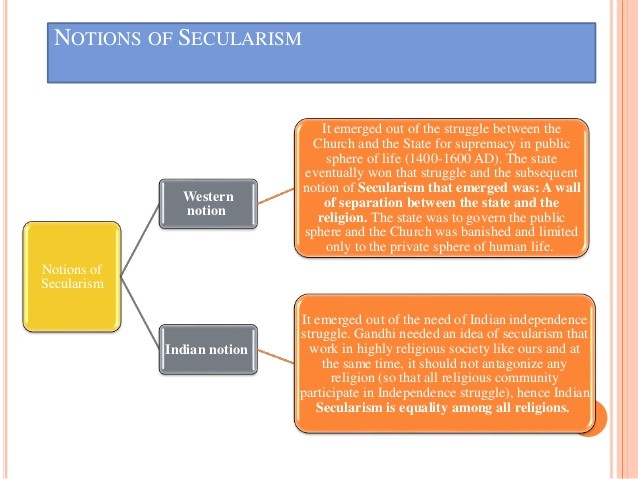[ad_1]

Context:
The Karnataka High Court upheld the ban on hijab by the educational institutes on 15 March 2022.
The court ruled that hijab is not an essential religious practice under Islam and, hence, it is not protected by the Article 25 of the constitution setting out the fundamental right to practice one’s religion.
The judgment of the High Court is very technical. It almost reads like a petition and betrays an excessive eagerness to disprove the other side.
The High Court of Karnataka has not been able to settle the hijab issue. Its judgment has further provoked the hijab-wearing college students in Udupi, who have now approached the Supreme Court of India to contest the order.
Indian Model of Secularism:
- The Constitution of India adopted that moral framework for the governance of India.
- Equality, justice and fraternity are as much a part of the great Buddhist tradition as of the modern European Renaissance.
- It is in fact the good fortune of India and perhaps a historical inevitability that leaders such as Jawaharlal Nehru and B.R. Ambedkar were there to give shape to the ideas of a modern nation, rooted essentially in the moral traditions of Buddhism and assimilating the egalitarian impulses of the modern world.
- Thus, the Indian Constitution provides for freedom of religion and conscience on the one hand and secularism for the governance of the country on the other.
- Many in this country passionately argue that secularism in India means that the state has equal respect for all religions.
- It is clear from the above that secularism enshrined in the Indian Constitution is based on the principle that the state has no religion. The Indian state is organised on this foundational principle.
- In Indira Nehru Gandhi vs Shri Raj Narain & Anr, the Supreme Court of India had reaffirmed this principle. The Court said: “the state shall have no religion of its own”.
Constitutional related Articles:
The term ‘Secular’ was added to the preamble by the forty-second constitution Amendment Act of 1976, (India is a sovereign, socialist, secular, democratic, republic).
It emphasise the fact that constitutionally, India is a secular country which has no State religion. And that the state shall recognise and accept all religions, not favour or patronize any particular religion.
- While Article 14 grants equality before the law and equal protection of the laws to all, Article 15 enlarges the concept of secularism to the widest possible extent by prohibiting discrimination on grounds of religion, race, caste, sex or place of birth.
- Article 16 (1) guarantees equality of opportunity to all citizens in matters of public employment and reiterates that there would be no discrimination on the basis of religion, race, caste, sex, descent, place of birth and residence.
- Article 25 provides ‘Freedom of Conscience’, that is, all persons are equally entitled to freedom of conscience and the right to freely profess, practise and propagate religion.
- Article 26, every religious group or individual has the right to establish and maintain institutions for religious and charitable purposes and to manage its own affairs in matters of religion.
- Article 27, the state shall not compel any citizen to pay any taxes for the promotion or maintenance of any particular religion or religious institution.
- Article 28 allows educational institutions maintained by different religious groups to impart religious instruction.
- Article 29 and Article 30 provides cultural and educational rights to the minorities.
- Article 51Ae. Fundamental Duties obliges all the citizens to promote harmony and the spirit of common brotherhood and to value and preserve the rich heritage of our composite culture.
Political dimension will fester:
The issue of the hijab is political as well as constitutional.
- The top Supreme court will examine the constitutional aspect and its judgment will hopefully settle the issue.
- But the political dimension of the hijab issue will continue to trouble Indian society for a long time.
- No great research is needed to unearth the fact that the seemingly sudden eruption of this issue reflects an insidious intolerance which is quite uncharacteristic of the majority religious community.
- As a matter of fact, Hindu and Sikh women in northern India cover their heads on all important occasions such as a marriage, a funeral, religious ceremonies, etc.
- It is a measure of the transformation that has taken place in Indian society that a piece of cloth is enough to serve as provocation for people to come out onto the street and fight against each other.
- In such an environment of intolerance, the claims of traditional tolerance, pluralism and catholicity seem like a bad joke.
What makes a theocratic state impossible in India?
- There is too much religiosity in public life in India. So, we have conveniently changed the meaning of secularism into ‘ sarva dharma sambhav’ which would only lead to majoritarianism and, ultimately, to the establishment of a theocratic state.
- We have seen that such a state of mind as “ samabhav” does not exist in reality in today’s India. Theocracy will ensure the disintegration of the country.
- The reasons are not far to seek. India is a multi-religious country where the largest minority is around 200 million.
- The Government of India had notified as many as six minority religions in the country.
- So, a theocratic state with the majority religion as the state religion is an unworkable proposition.
- Another crucial factor which makes a theocratic state impossible in India is the complex, inegalitarian, hierarchical and oppressive social structure of the majority religion.
- A theocratic state functions on the basis of religious laws, which in India means the Dharma Shastras according to which only a particular caste has the right to rule and a large majority of the population will have no right to be a part of the power structure.
- They will have no human rights and will be perennial victims of systemic oppression and injustice.
- Since a theocratic state based on the religious texts, in the Indian context, would mean a state which would deny equality before law and equal protection of law to the subaltern class and discriminate against them on the basis of caste, it will be inherently unstable.
This may lead to perennial conflicts and the eventual disintegration of society.
Conclusion:
Enlightened citizens should realise that if secularism is jettisoned, the hard-won national unity will be in peril.
Therefore, we reach the inevitable conclusion that India, as a nation, can survive only as a secular state where the state has no religion and does not promote any religion.
It is a measure of the thoughtlessness of people that educated Indians speak derisively of secularism and have begun to support the idea of a theocratic state based on the majority religion.
The wise men who led the freedom struggle and framed the Constitution had a deep understanding of India’s multi-religious and multicultural character and also the complexities of its social structure.
Secularism was chosen as the foundational principle of the republic to keep the nation united.
It is the patriotic duty of every citizen to strengthen secularism and thus save the republic.
[ad_2]

